Corporate Strategy for Market Leverage
Introduction
The core objective of application of the corporate business strategies, involving particular operational techniques and tactical approaches, is to ensure proper competitive market leverage obtainment for the respective business organisations and to maintain sustainable business practices which could enable any such corporate entity to properly achieve the business objectives within the existing market conditions. This perspective involves a dual fold approach in which identification and realisation of the business objectives and the management of associated risks could be successfully performed. The fundamental objective in this regard is to consummately achieve the broadest possible extent of profit maximisation within the current business environment and to simultaneously manage the productivity and service improvement related issues which any such business organisation could encounter within the operational business activity based market sphere. To this effect, the regulations and policy based control mechanisms which are instituted by the various business organisations could be termed as the fundamental constituents of the corporate governance structure through which the business operational practices could be consistently directed and utilised by the respective companies for the purpose of resource as well as activity management. The emphasis in this regard is always on the expansion of favourable conditions for the associated corporate entities and to garner the most optimised profit margins possible under the existing circumstantial elements.
In this context the corresponding business research regarding corporate strategic initiative based governance of the functionalities within the generalised corporate operational trends and market conditions would be considerate of an extensive range of differentials. For this purpose, the research report would be utilising the critical evaluation of the relevant industry based life cycle of a specific business organisation which would be selected for this purpose and would be reflecting upon the corporate strategic and governance related aspects which could be associated with the purpose selected organisation in this context. The focus would be on the influence that such corporate governance based strategy could entail on the specific organisation under consideration for the extended period within the particular industrial discipline under which the company could be operating. Furthermore, the structure of the corporate governance which could be determined to be related to the organisation selected for the purpose of this study analysis would be evaluated through effective comparison and contrast with the available critical data regarding the similar operational effectiveness of comparable business organisations which could be operating within the analogous industrial discipline. This would be also an attempt to provide an in-depth analysis of the previous and present efficacy of the corporate governance related operational structure which the particular organisation could be utilising.
Next, the research study would be developing a broad action plan for crisis management involving significant risk materialisation which the organisation under consideration could encounter in the course of the subsequent market operations. In this discourse, the study would also examine the probable recommendations of actions which could minimise or preclude the occurrences of corporate governance strategy based failures in terms of the business functionalities of the selected organisation. Finally, the research process would be also undertaking the determination of differential methods of data collection and analysis for the successful culmination of the research process so as to conduct the most effective, credible and relevant research into the various complications and issues regarding the organisational strategic functionality ensuring in the context of the selected business organisation. This process would essentially involve the utilisation of both the primary and secondary data collection and research performance techniques application.
Ultimately, the research study performance would be oriented towards the pointing out of the most suitable strategic recommendations through which the selected company could gain competitive leverage into the existing markets and could also achieve successful penetration into new markets globally. The utilisation of the primary and secondary data research and collection methods would be utilised for the showcasing of the authenticity and clarity attached to such a research project endeavour.
Background of the research and the selected business organisation
For the purpose of infusing the research project with the utmost relevance and clarity, the UK based multinational merchandise and grocery retailing organisation, Tesco Plc has been selected. According to Rugman and Verbeke (2017), the fundamental necessity to formulate proper business development approaches could be understood as the primary factor which prompts organisations such as the Tesco to undertake strategic planning and corporate governance procedures as implementation of such planning methods into actual and practical functionality. In this context, the background of the corresponding research is discernible from the fact that the company under consideration generally has to operate within a market structure which is increasingly becoming competitive and contested and this situation has made it imperative for Tesco to consistently undertake strategic evaluation of the existing operational procedures so as to update the organisational tactical functionalities for the purpose of preservation and possession of the existing market leverage which the company has. Furthermore, this research, apart from minutely examining the overall efficacy of the corporate strategies which the company under consideration could be utilising at the current market conditions, would also be delving into the research based analysis of the requirements for Tesco to formulate relatively effective and updated strategic methods of marketing and customer base expansion in the future perspectives. The emphasis is thus consummately concentrated on the fact of the necessity to develop consistently flexible strategic capability of the organisation under consideration to position itself favourably in the international retail market scenario so as to possess the necessary market segments in terms of sales improvement prospects and to function as a dominant and stable corporate platform in terms of the retail industrial discipline which it operates under.
Aim and objectives
Aim
The Researcher has evaluated the primary aim of the corresponding research study to be the formulation of the most effective and accurate understanding of the efficacy of the strategic endeavours of Tesco Plc to expand the undertaken business functionalities on the international scenario. The significance of such an understanding development could be ascertained from the perception that it is of paramount importance for the Tesco managerial hierarchy to perceive the impact which the existing and applied business expansion strategies could be having on their actual performance scenario on the international markets. This could generally entail the management criteria of not only the externalities regarding the products and services endorsed by the primarily grocery retail chain, but, the inclusion of the internalisation functioning as well involving the organisational working resources such as the human resource capital of Tesco.
Objectives
To understand the significance corporate strategy and governance on the organisational capabilities.
To assess the impact of business strategy and corporate governance on the business expansion prospects of the selected organisation.
To evaluate the various dimensions of such corporate strategy and governance regarding the business expansion capabilities of the selected company.
To determine the effectiveness of the current business expansion strategies employed by the Tesco Plc.
To formulate the suitable and credible recommendations for Tesco Plc to develop future business expansion and operational strategies.
Rationale of the study
What is the issue?
As per the research observations of Hernandez and Menon (2018), the fundamental issue of significance in this regard could be outlined as the consistent pressure from the hyper competitive market scenario under which the grocery and merchandise retail organisation under consideration is having to operate on a persistent basis. The necessity is of detailing certain strategic initiatives on the broader scale which could be utilised by the Tesco operational management hierarchy to enhance both the corporate governance of the internal systems of the company as well as the competitive ability of the organisation on the international market spaces. Two key variables in this respect could be identified as per the opinion of Brewster (2017).
The first one is the defining challenges of ensuring proper survival of the Tesco Plc in the longer term within the identified industrial perspective. The later one could be ascertained to be the opportunities which could be identified within this extraneously competitive marketing environment, both in the global and regional domains. The combined effect of these variables on the strategic methods applied by the Tesco Plc could be considered to be the primary catalyst which extensively influences the future direction which the company under consideration could strive for in terms of sales volume improvement, competitive leverage attainment, organisational value management, profit optimisation along with the expansion of the business domains across different markets. Thus, the issue relating to such a research perspective could be defined from the notion that Tesco has to consistently upgrade and develop the existing capabilities as well as the understandings which it possess concerning the market conditions and the directions towards which such retail markets could be heading.

Why is it an issue?
As has been observed by Thompson, Strickland and Gamble (2015), this particular research topic could be considered to be a concerning issue from the perspective of the existing general dearth of critical and circumstantial understanding of the varied dimensions of corporate governance and strategic business policy management on part of the Tesco managerial hierarchy. The necessity in this regard, as has been outlined by Foucault and Frésard (2018), is for Tesco Plc management structure to quintessentially undertake change institution within the working architecture of the organisational policy determination as well as applying the same by the company under consideration within the existing corporate operational environment both within the United Kingdom as well as beyond. This has been better delineated by the propositions of Hickman and Silva (2018) as the addressing of the shortcomings related to adherence to the changing and developing trends of the current retail market worldwide on part of the Tesco Plc. Furthermore, the complications related to managing the organisational resources which have to be properly co-ordinated in the manner to accomplish the global business process related responsibilities and customer service management by the company under consideration, could as well require the formulation of proper implication based understanding of the effects of strategic business expansion policies of the UK based multinational retail organisation within the intensely competitive retail industrial market segments where Tesco operates.
Why is it an issue now?
The concurrent relevance of the issue could be identified, as per the suggestions of Puranam and Vanneste (2016) as the rapid transformation of the market conditions in the global perspective regarding the retail sector which has been further complicated by the declining sales prospects of Tesco under the severity of competitive exigencies emanating from the fact that the globalised market scenario has permitted greater number of analogous organisations to join this specific industrial discipline throughout the previous decade. Furthermore, two defining international politico-economic developments have also furthered the demand of improvement and re-evaluation of the current business strategies of Tesco with probable indications of development of further effective strategies for particular purposes. These two overarching incidents could be identified as the global economic recession during the period of 2007-08 to 2014-05 and the occurrence of Brexit.
Problem statement
As per the observations of Adamides (2015), the core problem related to the research topic is associated with the imperatives for Tesco to select and implement the proper business strategies through which continuous diversification of the endorsed services and marketing processes could be made operational and achieved with effective success yet sustaining the focus on the fundamental business processes. This has been further enumerated by Rao and Tilt (2016) to be the effort to maintain the necessary balance in between the developing and existing market spheres as well as the management of product preferences. Another fundamental aspect in this regard is to enhance and maintain enduring customer loyalty towards the services and products endorsed by Tesco. The combination of such extensive imperatives in the expansive yet intensely competitive international retail sector has demonstrated the requirements for Tesco to undertake concerted efforts in context to the upgrading and consistent realignment of the existing overall marketing and other corporate operations based strategies. However, at the current value of analytical understanding which is possessed by the retailer organisation, it could be understood to be inadequate regarding the core competency development by the company to properly address all of the corporate operational issues as well as maintain the growth rate which it covets. The undertaken research process is deliberative in terms of addressing such a specific research requirement for the Tesco executive services.
According to Argenti (2018) corporate strategy could be considered to be extensively different from each and every other form of operational strategy on the basis of the ambiguous boundaries which such strategic considerations have. As has been designated by the research of Chen et al (2019) corporate strategy generally concentrates on three distinct aspects of the organisational functional perspectives. These are the identification of the targeted markets, the recognition of the region where such markets could be in existence along with the associated implications of the same and the changes or modifications which could be necessitated in the entire value chain mechanism which would be required to properly align the organisational resources and working capabilities to access those markets in the most methodical as well as sustainable manner. McManners (2016) has argued that, for the various retail industry based organisations such as that of Tesco Plc who are also multinational operators, corporate governance and associated strategy also entail value analysis in the form of development of the methods of the value creation, maximisation and minimisation of risk propensities which are directly related to the obligation of having to operate within a volatile and uncertain market condition. According to Basu (2017), this also involves the reformation of the organisational design through corporate governance involving the decision formulation regarding the best structure for the operational strategy and the management of proper arrangement of the business utilities of the organisations to specifically support the strategic policies.
Literature review
Understanding corporate strategy and governance
As has been propounded by Lloret (2016), the process of corporate governance could be ascertained as the primary vehicle of progress in terms of the corporate organisational perspective regarding management of effective performance of resources and capabilities in the most appropriate manner. Lendel, Soviar and Vodák (2015) have associated this with the overbearing indispensability of organisational functioning within a definite business environment. The underlying objectives of such a process of governance are to ensure customer satisfaction and optimisation of productivity involving the respective corporate entities. Apart from these, Christ, Burritt and Varsei (2017) have outlined another objective in the format of overcoming the detrimental effects of market uncertainties in the retail business sector, to be closely associated with ensuring effective corporate governance within different multinational companies. According to Menz and Barnbeck (2017) corporate governance is oriented towards the formulation of a climate of learning through which the recognition, operational implementation and maintenance of the basic implements and procedures of business activities could be achieved. Chang (2016) has averred that any measure of corporate governance based strategy could be subdivided into two distinct procedures, namely the business strategy and the functional strategy. The segment of business strategy could be further categorised into competitive and cooperative methodical approaches which foundational processes are regarding the mandate to operate within a hyper competitive business scenario. On the other hand, the functional strategies could be considered to be associated with the development and nurturing of the distinctive competence and capabilities within any organisational working structure such as that of Tesco. Such competitive capabilities could be understood to be the research and development responsibilities, purchasing operations, marketing and human resource direction provisioning, utilisation of the latest technological innovations such as those of Information Technology and logistics management.
As has been substantiated by Wood, Wrigley and Coe (2016) the involvement of corporate governance in this context is to ensure that the strategic business expansion policies of the business organisations concerned could be executed in the most systematic and structured manner. The objective in this respect is to obtain the largest possible and the most enduring customer base both in the existing and prospective customer bases. Furthermore, the research of Um et al (2018) has suggested that greater measure of opportunities could be obtained in the global grocery and differential merchandise retail market by Tesco if the utilisation of corporate governance directed strategic business policy implementation could be achieved by the company executive.
The international business expansion strategy
According Akter et al (2016), various methods are utilised as corporate stratagem for the purpose of market based business objective achievement by different multinational companies including that of Tesco. These could be identified as the acquisition of other, similar business organisations or merger between two comparable organisations, undertaking of joint ventures in between multiple companies within the same market conditions, establishment of new organisational production mechanisms and plants for the purpose of enhancement of product availability and management of time durations which could be required for the products and services to become functional for the markets, forming strategic alliances with different business partners and through development of the most productive marketing mix to manage the market penetration and customer attention management in the most effective and suitable manner. According to Wood, Coe and Wrigley (2016), the merger and acquisition strategic operations could be considered to be a predominant strategic approach for current multinational companies while having to work within the predefined market dimensions. This involves the purchasing of the equal measure of market shares of specific companies by other respective companies and the merging process culminates in the equal distribution of the existing assets and liabilities. In case of complete acquisitions, the structure of management generally rests with the acquiring company more favourably since the entire public issue share holding by any specific company could be bought by the acquiring company. In case of mergers, only half of the management responsibilities rest with each of the merged organisations. Both of these strategic techniques, as has been observed by Evans and Mason (2018) could be employed in tandem with the information which could be derived from business environment analysis through a structured and layered approach. This layered approach, as has been specified by Ismail (2017) is necessary for a particular reason which could be substantiated as calculating the long term effects of the macro economic variables such as the level of investment and market growth, the actual output in terms of value propositions of the organisational resources and the rate of returns on the investments made regarding acquisition or merger with local or regional or even other multinational companies. Shrives and Brennan (2017) have determined the significance of the confidence indices in this perspective to manage some of the peripheral effects of such variables such as the supply of investment capital, the pointing out of the probabilities of earning benefits against investments concerning particular joint ventures, balancing the demand and supply factors involving products and services and the most important aspect of managing policy in accordance to the international exchange rates. In this context, the observations of Okaily, Dixon and Salama (2019) have highlighted the four different factors which could influence the corporate strategy of Tesco. These could be understood as the structure of decision formulation of the organisation as well as the impact of market rivalry on the same, the influence of the demand based conditions on the entire perspective of business expansion over transnational markets by Tesco, the supporting services which could enable the company to address any exigency in the form of the ancillary organisations and the internal resource factor conditions such as the working human capital in the form of the employees and the dimensions of their possessed skill sets.
Impact of strategy on the business operations
As has been concluded by Denoncourt (2018), the strategy of expanding business operations into hitherto unattended markets has profound and variable impact on the overall business operations of the respective companies. The focus has to be concentrated on the rules and regulations which are observed in the international trading processes so as to ensure that the concerned company could adopt the most effective and legally flawless expansion strategy in terms of operating within new market spaces. Chalaczkiewicz-Ladna, Esser and MacNeil (2017) have opined that external factors relating to the certain conditions under which Tesco could be having to operate also impart profound impact on the operational direction undertaken by the company under consideration in this research study. This, in turn, would, necessitate the careful evaluation of the growth and business projection strategies to align these closely with the legal and political conditions which Tesco could expect to encounter in the hitherto untapped markets. According to Tricker and Tricker (2015) this could be better acknowledged in the form of the formulation of new policies or adapting the existing ones to the identified regulations of the particular conditions and legal stipulations of the targeted market spaces. However, this could be considered to be the source of added difficulty for the global operational expansion of Tesco since it is inherently problematic to ensure proper compliance to and execution of the adherent policies of the differential and often diverging rules and regulations which exist at separate retail industry based market regions, in the most required of manners. In this context, much could depend on the ability of Tesco to properly utilise the available technological cutting edge novelties to formulate innovative policies through which better understanding of the corporate credentials of the joint venture partner companies as well as that of the targeted market conditions could be developed. Thus, new concepts of strategy and tactical approaches would be necessary. According to McCahery, Sautner and Starks (2016), the production practices undertaken by Tesco, if successful to meet the requirements, would be enable the operations of the company to grasp the opportunities and realise the associated benefits to the extent where the sales and profit margin based growth of the company could become definite possibilities.
On the other hand, as has been outlined by Armstrong et al (2015) several negative impacts could befall on the operational capabilities of Tesco is the corporate business strategies could not be commensurate to manage all of the business exigencies. One of such negative impact could be the problems which could arise from the obligation to adhere to the nation specific taxation structure in line with the national customs and export duties which have to be remitted by the retail organisation. Tesco would have to ensure the compliance to such national legal and economic regulations concerning the targeted market where the company could be planning to expand to. Apart from these, Crowther and Seifi (2018) have highlighted the ever present necessity of meeting the local as well as international competitive requirements by Tesco and any failing in this perspective could lead to serious downturn in the sales volume management by the company management hierarchy.
Corporate strategies used by Tesco Company
According to Wood, Wrigley and Coe (2016),Tesco Plc is utilising the strategic alliance formulation methods for the purpose of expanding the retail business periphery to new national market domains. The objective underscoring such a corporate strategy is to ensure the identification and utilisation of the opportunities of sales and customer loyalty improvement for obtaining and sustaining favourable market share in the longer terms. Thus, the emphasis has been on the sustained co-operation and collaboration with strategic partners for the purpose of development of suitable techniques and plans to gain competitive positional leverage as well. Another objective, as has been determined by Um et al (2018) has been to properly comprehend the preferences and necessities of the customers within the comparatively new market sectors and develop accurate product and service offerings in an accurate manner. The instance of Tesco Plc and Carrefour supermarket group forming the joint venture based strategic alliance which became operational during October 2018 could be highlighted to be significant as a definite measure on part of such corporate operatives to utilise particular business strategic methods regarding the objective of curtailment of operational costs and to also provide the customers with a range of comparably less costly products and services. Apart from these, Evans and Mason (2018) have analysed that this deal has been an effort, on part of both of these supermarket groups, to position themselves in the advantageous position to negotiate better terms of supply involving their institutional suppliers such as Nestle, Proctor & Gamble and Unilever Plc.
According to Wood, Coe and Wrigley (2016), this strategic alliance of Tesco with the French organisation Carrefour is also significant from the perspective that it indicates the corporate strategic decision to compete at similar terms with those of the discounters such as Aldi and Lidl within both the domestic UK markets as well as in the global retail sector. This alliance is also suggestive that both the supermarket groups are interested in cost minimisation to ward off the effects of greater cost inflation. According to Ismail (2017), the demonstrated benefits of such retail alliance could be confirmed through the hike in the share value of such organisations such as Tesco Plc with relatively lesser downsides to the overall effect.
Discussion of primary and secondary research
The research requirement of collecting research data and analysing the same has prompted the researcher to undertake the utilisation of the Primary and Secondary modes of data collection based research methods. The specified objective is to determine the effectiveness of these corporate governance base strategic expansion processes which have been so far employed by the Tesco Plc both in the shorter as well as in the longer terms. The collection and analysis of both these formats of data are vital in terms of minimisation of the research error and coming up with the accurate research findings through which the Researcher could outline the most probable and necessary changes which would be required by the supermarket retailer to implement in the future. The direct method of research data collection is thus identified as the Primary research process and the gathering of data and information from secondary literature such as published books, journals, previously formulated research papers, online based data repositories and other similar literary sources of information could be generally considered to be the Secondary process of research data collection. According to Akter et al (2016),the determination of such dual mode based data collection and analysis is premised upon the necessity to utilise particular data methodology based techniques so that the Researcher could arrive at definite research conclusions while having to analyse and evaluate the credibility and accuracy of the research findings and outcomes in comparison with those of the research objectives and research hypotheses. In this context, the concerned Researcher has utilised Primary research based Quantitative data collection method to undertake proper and focused research process execution regarding the topic under consideration. This could be beneficial from the perspective of the development of the most effective and evidence based solutions for the identified research problem. Furthermore, the Quantitative process based data collection is also dependent upon the generation of data analytical outcomes through the utilisation of the direct responses of research participants against the provided research questions to them. Thus, this format of research data collection and analysis could be also acknowledged to be evidence based and meaningful research process where each segment of the statistically analysed data could be validated, compared and aligned with the previously devised research questions and objectives.
On the other hand, the Secondary research is reflective of the gathering, collation, summarisation and synthesis of secondary data from various literary sources for the research. The purpose of the Secondary research within the precincts of any research project is to ensure proper comparison and contrast scope with those of the Primary research based analysis of data and to provide greater clarification of the Primary data. This is performed through the utilisation of previously existing and already collected data which could have been authenticated earlier as well. This method could effectively contribute in the enhancement of the effectiveness of the entire research process. Thus, for the purpose of the research project completion, the Researcher has utilised the Primary Quantitative data collection process which has been formulated through the development of a set of close ended, semi-structured questionnaire for the research participants to respond to. For the selection of a specific sample of research participants, the Researcher has utilised the random, snowball sampling process under which the entire workforce currently employed by the Tesco Plc at the UK has been considered to be the research population and this population has been then segmented into multiple categories depending upon their job designation and experience, age and gender category. These personnel, segmented in each of the categories, have been then accorded numbers from 1 to N and then 100 random numbers have been selected to provide the widest possible research sample collection horizon to the entire Quantitative research process. This selected sample of 100 research participants have been then presented with the previously developed research instruments in the forms of the sets of 10 Quantitative questions to each of the participants for them to provide their responses to. The data collection and analysis has been performed through the utilisation of the data demonstration and analysis instrument of the Likert Five Point analysis scale and the collected data outcomes have been converted into different charts so as to provide a better delineation to the research readership about the analytical outcomes of the participant response based data.
Analysis and interpretations
Question 1: Do you agree that Tesco needs constantly re-frame existing corporate business propagation strategies?
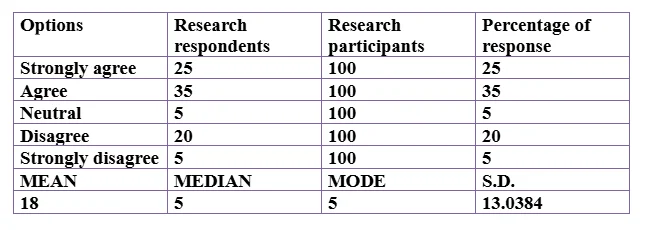

Analysis
The above demonstrated statistical analytical outcome is demonstrative of the fact that majority of the selected research respondents (up to 60% of the total number of respondents) harbour the opinion that existing corporate business expansion strategies would be necessitated to be reviewed and re-framed as per the necessity of the markets. This research outcome is reflective of the research inquests highlighted in the fifth research objective.
Question 2: Do you agree that the core objective of the corporate strategy of Tesco is to expand business processes on an international perspective?

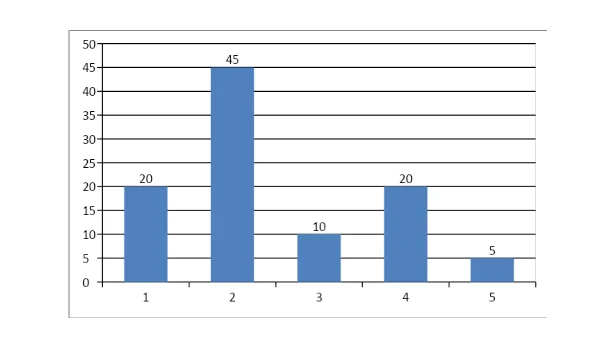
Analysis
The outcome of the research response analysis clearly demonstrated that a combined total of 65% of the responses attest in favour of the notion highlighted in the particular question. This response trend answers the first and third research objectives.
Question 3: Do you think that utilisation of the technique of strategic alliance could be a viable business propagation strategy for Tesco in future?

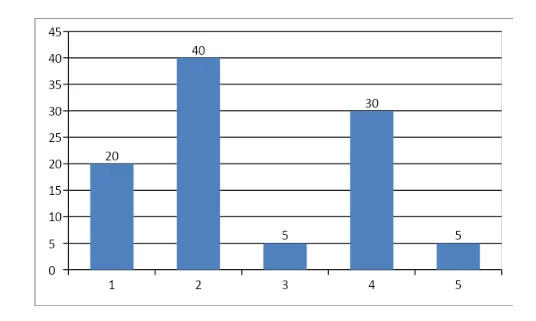
Analysis
The analysis of the cumulative amount of responses has outlined the fact that a total of 60% of the responses have demonstrated favourable opinion for the suggestion which has been provided to them by the Researcher in the form of the pertaining research inquest. This outcome could be aligned with the second research objective.
Question 4: What is your opinion regarding the notion that globalization has prompted to a great extent the internationalisation of the business of Tesco?

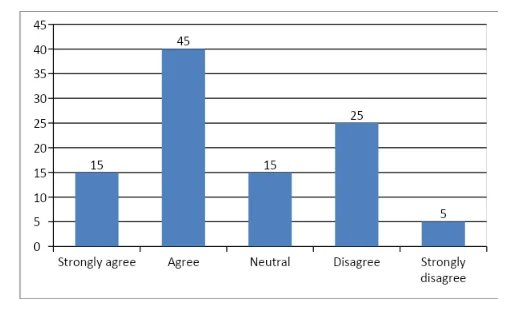
Analysis
The Researcher had formulated this question to additionally evaluate the perception of the Tesco employees regarding the current business conditions and the operational imperatives of the retail giant. The analysis has clearly indicated that the overwhelming majority (60%) of the respondents are off the view that globalisation has been responsible for the internationalisation efforts of the company. This could be thus aligned with the fourth research objective.
Question 5: Do you agree that Tesco requires to greatly emphasise on the localisation of the procurement and distribution measures while operating in the overseas markets?
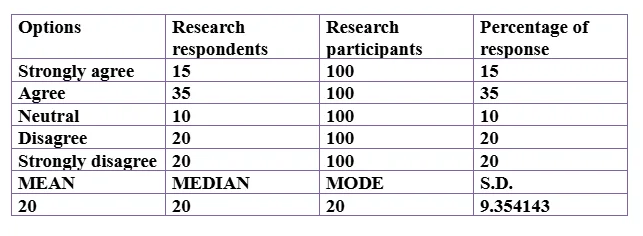

Analysis
The research data analysis has outlined the result that combined 50% of the respondents have been of the opinion that localisation of distribution and procurement for Tesco would be necessary in overseas markets. This data revelation by the Researcher could be aligned with the second and third research objectives.
Question 6: How much do you agree that Tesco concentrates emphatically on the marketing message propagation through the utilisation of Social Media?


Analysis
The question has been formulated by the Researcher for the purpose of evaluation of the perception of research respondents regarding the marketing media which has been in greater utilisation by Tesco. The data analysis outcome has been reflective that 70% of the combined respondent strength is off the opinion that Social Media is the primary mode of marketing message propagation. This revelation could be aligned with the third and fourth research objectives of the research study.
Question 7: How much do you agree that Tesco is required to conduct regular market surveys prior to the formulation of strategic plans regarding product and service line diversification and business service expansion?

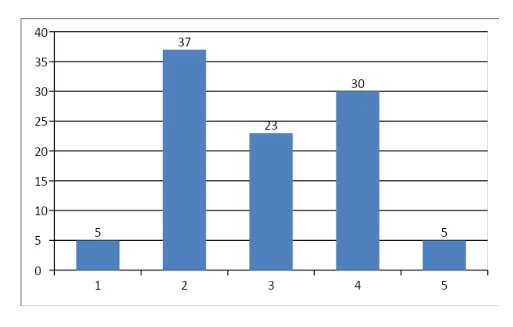
Analysis
The necessity of market surveys to be instituted has been enquired about through the preceding research inquest by the Researcher and 42% of the combined strength of the research participants has affirmatively attested in favour of such a proposition. Notably, a comparatively large section, 23% of the research participants has withheld their answers. This could be aligned with the first, third and fourth research objective of the research.
Question 8: How much do you agree that expansion of business functioning of Tesco could further build and enhance the overall brand reputation of the company?


Analysis
As could be ascertained from the above demonstrated data table, 67% of the research respondents have been of positive opinion in favour of the expansion of Tesco business functionalities to further the brand reputation of the company. This outcome could be aligned with second, third and fourth research objectives this project.
Question 9: How far do you agree that strategic alliance and transnational business expansion techniques could be utilised in a simultaneous manner by Tesco?
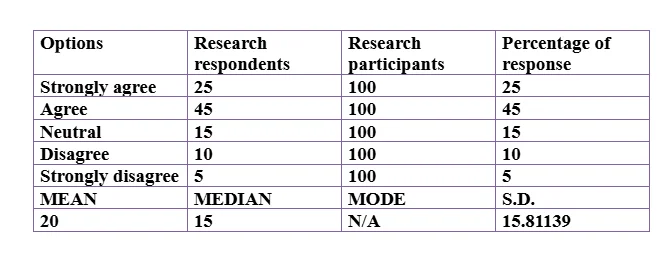

Analysis
This research inquest has been formulated from the first, fifth and third research objectives by the Researcher. The analytical data outcome has been indicative of 70% of the combined strength of the research participants who are in favour of Tesco following both the corporate strategies of transnational business and alliance formulation.
Question 10: How far do you agree that the internal corporate governance based structure of Tesco is capable to manage the organisational and functional exigencies which the company could encounter in the longer term in the globalised competitive market?
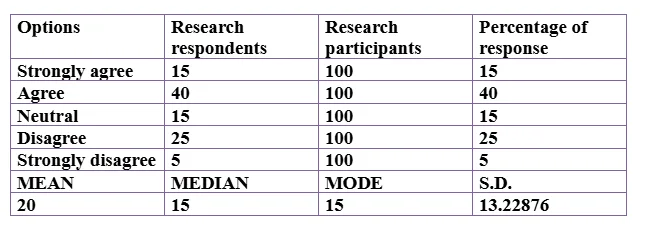

Analysis
The research inquest has been formulated by the Researcher on the basis of the final research objective to highlight the necessities of recommendation development for the future progression of such research studies. Though the majority of the responses have been positive about the efficacy of current organisational governance structures, greater research is necessary in this context.

Recommendations and action plan
Recommendation
The preceding data collection and analysis section has highlighted a multitude of different realisations from the research perspectives. Apart from outlining the effectiveness and benefits of corporate research strategy, the Quantitative data analysis has also outlined the efficacy and applicability of the existing Tesco strategies. In this respect, the Researcher has formulated the following recommendations:
Utilisation of a credible mix of different corporate strategic and governance based approaches in the long term business expansion operation.
Utilisation of the transnational and alliance formulation strategies with equal measure of emphasis on both.
Concentration of sales and product development processes while undertaking local conditional considerations.
Regional partnership formulation has also to be emphasised.
Greater effort investment to enhance social media based advertisement and marketing message propagation to reach the maximised number of customers.
Reference List
Rugman, A. and Verbeke, A., 2017. Global corporate strategy and trade policy. Routledge.
Hernandez, E. and Menon, A., 2018. Corporate Strategy and Network Change. Academy of Management Review, (ja).
Brewster, C., 2017. The integration of human resource management and corporate strategy. In Policy and practice in European human resource management (pp. 22-35). Routledge.
Thompson, A., Strickland, A.J. and Gamble, J., 2015. Crafting and executing strategy: Concepts and readings. McGraw-Hill Education.
Foucault, T. and Frésard, L., 2018. Corporate strategy, conformism, and the stock market. The Review of Financial Studies, 32(3), pp.905-950.
Hickman, C.R. and Silva, M.A., 2018. Creating excellence: Managing corporate culture, strategy, and change in the new age. Routledge.
Adamides, E.D., 2015. Linking operations strategy to the corporate strategy process: a practice perspective. Business Process Management Journal, 21(2), pp.267-287.
Rao, K. and Tilt, C., 2016. Board composition and corporate social responsibility: The role of diversity, gender, strategy and decision making. Journal of Business Ethics, 138(2), pp.327-347.
Chen, H., Zeng, S., Yu, B. and Xue, H., 2019. Complementarity in Open Innovation and Corporate Strategy: The Moderating Effect of Ownership and Location Strategies. IEEE Transactions on Engineering Management.
Lendel, V., Soviar, J. and Vodák, J., 2015. Creation of corporate cooperation strategy. Procedia economics and finance, 23, pp.434-438.
Christ, K.L., Burritt, R.L. and Varsei, M., 2017. Coopetition as a potential strategy for corporate sustainability. Business Strategy and the Environment, 26(7), pp.1029-1040.
Wood, S., Wrigley, N. and Coe, N.M., 2016. Capital discipline and financial market relations in retail globalization: insights from the case of Tesco plc. Journal of Economic Geography, 17(1), pp.31-57.
Akter, S., Wamba, S.F., Gunasekaran, A., Dubey, R. and Childe, S.J., 2016. How to improve firm performance using big data analytics capability and business strategy alignment?. International Journal of Production Economics, 182, pp.113-131.
Evans, B. and Mason, R., 2018. The lean supply chain: managing the challenge at Tesco. Kogan Page Publishers.
Okaily, J.A., Dixon, R. and Salama, A., 2019. Corporate governance quality and premature revenue recognition: evidence from the UK. International Journal of Managerial Finance, 15(1), pp.79-99.
Chalaczkiewicz-Ladna, K., Esser, I.M. and MacNeil, I., 2017. Engaging stakeholders in the UK in corporate decision-making through strategic reporting: An empirical study.
Armstrong, C.S., Blouin, J.L., Jagolinzer, A.D. and Larcker, D.F., 2015. Corporate governance, incentives, and tax avoidance. Journal of Accounting and Economics, 60(1), pp.1-17.
- 24/7 Customer Support
- 100% Customer Satisfaction
- No Privacy Violation
- Quick Services
- Subject Experts



